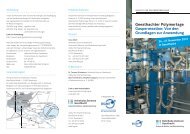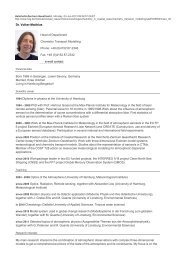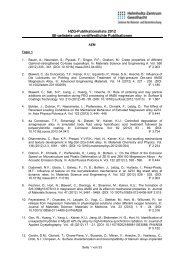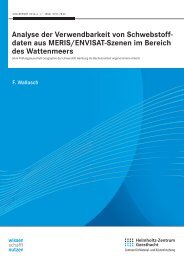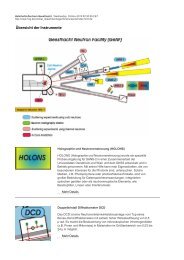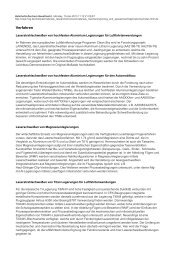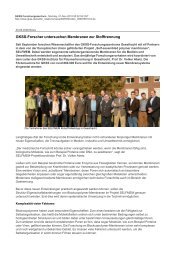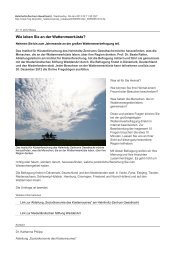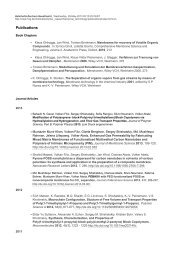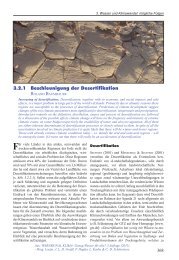High-resolution wave climate analysis in the Helgoland area - GKSS
High-resolution wave climate analysis in the Helgoland area - GKSS
High-resolution wave climate analysis in the Helgoland area - GKSS
You also want an ePaper? Increase the reach of your titles
YUMPU automatically turns print PDFs into web optimized ePapers that Google loves.
3.2 Wave model<strong>in</strong>g with empirical downscal<strong>in</strong>g techniques 31<br />
STDEV [m] DWP LNA HH1 HH2 DE1 DE2<br />
HF - KMH 0.159 0.302 0.191 0.286 0.272 0.289<br />
LR - KMH 0.097 0.163 0.104 0.159 0.128 0.085<br />
CCA - KMH 0.108 0.255 0.179 0.19 0.163 0.1<br />
Analog - KMH 0.224 0.364 0.234 0.385 0.218 0.184<br />
MR (dir) - KMH 0.089 0.183 0.181 0.154 0.131 0.114<br />
MR (tp) - KMH 0.095 0.133 0.099 0.153 0.119 0.082<br />
BIAS [m]<br />
HF - KMH 0.04 -0.045 0.17 0.257 0.228 0.39<br />
LR - KMH 0.004 0.011 -0.0002 0.0008 0.019 -0.0006<br />
CCA - KMH 0.005 0.023 -0.015 0.004 0.025 -0.009<br />
Analog - KMH 0.012 0.022 -0.007 0.012 0.2 -0.004<br />
MR (dir) - KMH -0.006 -0.012 -0.046 -0.003 0.01 -0.008<br />
MR (tp) - KMH 0.003 0.007 0.001 -0.002 0.017 -0.0007<br />
Table 3.1: Bias and standard deviation of differences <strong>in</strong> meters between significant <strong>wave</strong> heights<br />
obta<strong>in</strong>ed from different downscal<strong>in</strong>g techniques and KMH for <strong>the</strong> po<strong>in</strong>ts near coastal facilities for<br />
<strong>the</strong> 1995-2001. In bold face <strong>the</strong> m<strong>in</strong>imum values with<strong>in</strong> first four methods are marked. The last<br />
two l<strong>in</strong>es concern SWH comparison for <strong>the</strong> multiple regression experiments.<br />
<strong>the</strong> steep depth gradient causes <strong>in</strong>tensive bottom dissipation and shoal<strong>in</strong>g. These processes<br />
are sensitive to <strong>the</strong> variable water depth and <strong>the</strong> SWHs here are only partially dependent on<br />
<strong>the</strong> boundary conditions and approach<strong>in</strong>g external <strong>wave</strong>s. Therefore, <strong>the</strong> statistical models<br />
are not able to provide equally accurate <strong>wave</strong> reconstruction as for <strong>the</strong> deep water <strong>area</strong>s.<br />
Similar considerations apply to <strong>the</strong> <strong>area</strong> to <strong>the</strong> north from <strong>the</strong> island where <strong>the</strong> oblong shoal<br />
activates <strong>the</strong> shallow water processes, which makes <strong>the</strong> accurate SWH representation not<br />
completely feasible for <strong>the</strong> statistical methods.<br />
The next experiment addresses <strong>the</strong> problem which often arises for <strong>the</strong> regression-like<br />
downscal<strong>in</strong>g methods, namely, <strong>the</strong> underestimation of <strong>the</strong> temporal variability of <strong>the</strong> reconstructed<br />
fields. This property was revealed and discussed <strong>in</strong> a number of studies dedicated<br />
to <strong>the</strong> downscal<strong>in</strong>g methods and procedures (e.g. Katz and Parlange [1996], Zorita and von<br />
Storch [1999]). To test how <strong>the</strong> SWH fields reconstructed by LR, CCA and analog methods<br />
are subject to <strong>the</strong> underestimated variability, <strong>the</strong> variances of <strong>the</strong> SWH from statistical<br />
models and KMH at each grid po<strong>in</strong>t are compared. The correspond<strong>in</strong>g relations are shown<br />
<strong>in</strong> Figure 3.4. For <strong>the</strong> fields obta<strong>in</strong>ed with l<strong>in</strong>ear regression <strong>the</strong> variances are slightly overestimated<br />
for <strong>the</strong> south-western part and underestimated to <strong>the</strong> east from <strong>the</strong> island, here<br />
<strong>the</strong> ratio goes down to 0.9. For <strong>the</strong> CCA <strong>the</strong> underestimated variability is more pronounced<br />
but too much variability <strong>in</strong> <strong>the</strong> western part of <strong>the</strong> model doma<strong>in</strong> can still be observed.<br />
For <strong>the</strong> analogs <strong>the</strong> <strong>area</strong> of too low variability is shifted to <strong>the</strong> north with respect to LR<br />
but rema<strong>in</strong>s approximately <strong>the</strong> same by magnitude, whereas <strong>the</strong> overestimation of <strong>the</strong> variance<br />
on <strong>the</strong> west becomes stronger and <strong>the</strong> ratio of <strong>the</strong> variances reaches 1.05. A plausible<br />
explanation of <strong>the</strong> low-variance behaviour is that <strong>the</strong> local <strong>wave</strong> heights variability only



